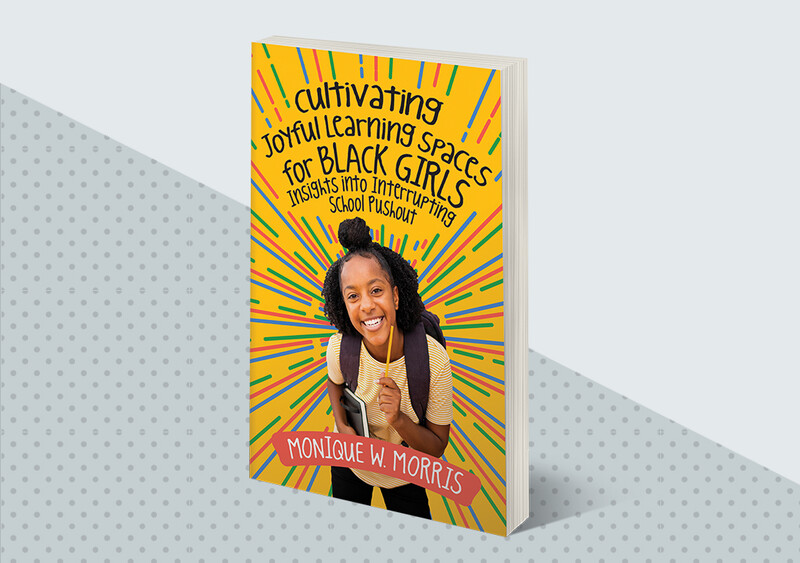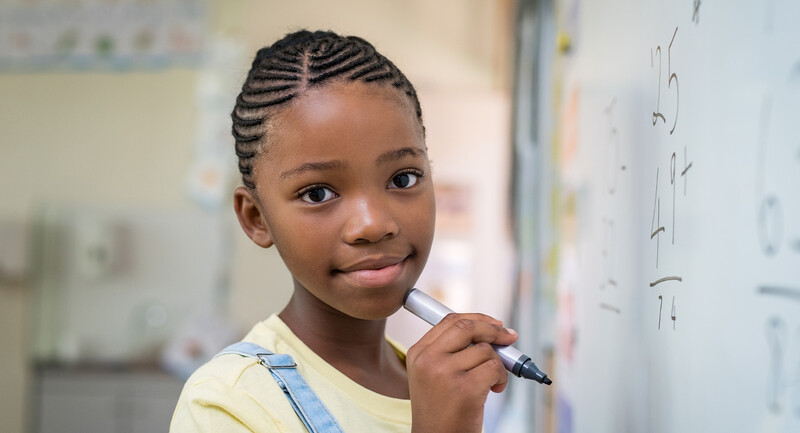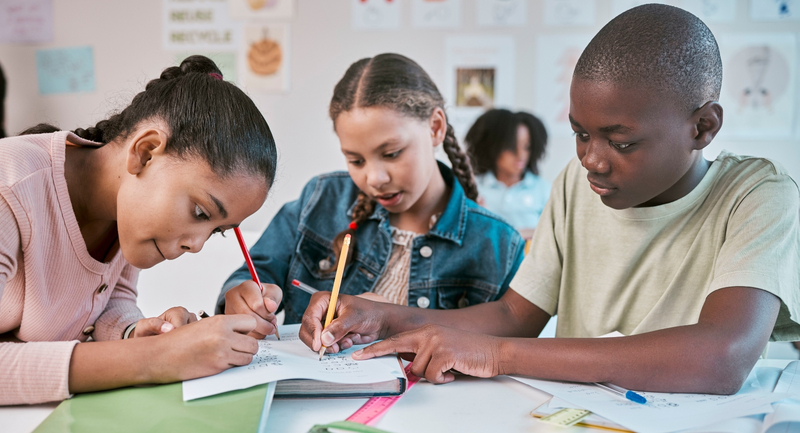In her recent book, Cultivating Joyful Learning Spaces for Black Girls: Insights into Interrupting School Pushout (ASCD, 2022), Monique Couvson (formerly Monique W. Morris) addresses common practices in education that marginalize and disadvantage Black girls. In this excerpt from the book, Couvson describes preliminary actions schools can take to better understand their areas of potential bias and become more responsive to the needs of Black girls and their families.
Joy is an essential part of learning. The foundations for creating joyful learning environments that also support Black girls’ academic achievement require that we create conditions that allow them to feel safe and loved. This is a foundational consideration for your practice. Safety is co-constructed through relationships—not simply by implementing a program or system of surveillance.
Authentic relationships and ongoing engagements to cultivate trust with one another allow for students and educators to bring themselves to the learning process with an open mind to dismantle biases that lead to judgment or reprimand. Many educational practices have the deleterious effect of interrupting the development of relationships, and thus, joyful learning experiences. Behavioral protocols that mimic carceral systems, pedagogical practices that only acknowledge Eurocentric values as valid, and other school-based learning activities may be leading to the undesired effect of alienating students who are culturally and linguistically diverse, such as Black girls. To advance toward more equitable conditions that provide a foundation for the ongoing work of revising policies and practices that render Black girls vulnerable to school pushout, schools must consider how they transform themselves into conduits for healing and transformation. This is not simple work, and it begins with an honest, intentional practice of self-examination.
Investigate Yourself and Your Institution
Commit to self-examination and reflection toward building an antiracist, antisexist learning institution. Bettina Love writes in We Want to Do More Than Survive (Beacon Press, 2020) that we can move toward this goal through abolitionist teaching, which she describes as “the practice of working in solidarity with communities of color while drawing on the imagination, creativity, refusal, (re)membering, visionary thinking, healing, rebellious spirit, boldness, determination, and subversiveness of abolitionists to eradicate injustice in and outside schools.” Racism and racialized gender bias are exhausting and can be felt in many different ways. They are exacerbated by the corporate model that reduces the visibility and joy of Black girls and their families. This situation requires remedy.
Be Able to Define Racism and Develop a Complex Racial and Gender Analysis Using an Intersectional Frame
Intersectionality is a framework that understands how individuals’ complex identities intersect to form unique vulnerabilities to institutions and structures in society. As more than just a recognition that these identities exist, intersectionality as a framework for developing a rigorous racial and gender analysis informs the development of perceptions and practices that map the margins and protect those most vulnerable to oppression. This “mapping” involves data collection, as knowing your school’s data—across a spectrum of decision-making points—is an important first step to being able to develop a robust racial and gender analysis with respect to school discipline trends and their contributing factors. However, collecting data with an eye toward who may be missing from the data, or whose experiences may be obscured by the way questions are asked and data collected, is essential.
Make Schools Inviting to Parents—and Students
Families should see and feel that their school believes they are a priority and that they are active participants in their learning community, not just a population to be corralled or “served.” Partnerships and engagements with others cannot be structured as transactional if they are to be sustainable.
Instead of ignoring, undermining, or criminalizing their gifts, work with Black girls to celebrate and recognize that every girl has the potential for leadership.
Recognize That Presentational Knowing Is an Important Part of Establishing a Climate of Respect with Black Families and Communities
Keep (but consider whether to display) your old photos of alumni—even if they harken back to a period of segregated opportunity. But have active discussions about how the school has been part of a narrative that either supports or rejects equal access to a high-quality education—and how it is working to remedy past harms. Strive to include other images that signal to the current student population that they are valued and centered in the school’s current climate.
Build a Culture of Support for Black Girls That Recognizes How Each of Them Is Standing Boldly in Her Gifts
Instead of ignoring, undermining, or criminalizing their gifts, work with Black girls to celebrate and recognize that every girl—not just the ones who are performing at a high level at that moment—have the potential for leadership. For example, if a student is particularly loquacious, to the point of disruption, instead of removing her from the classroom, schedule time to speak with her privately. In that meeting, ask her why she is continually speaking out of turn. Chances are, she’ll respond with some version of “I don’t know,” “Sometimes I get bored,” or “I just think things are funny.” Whatever her response, try not to internalize her experience, and instead, find a way to notice (aloud) that she is observant and still a valued part of the learning community. Then, find a way to honor what she needs to exercise her leadership—and observations—in a semi-structured way. Maybe offer her an opportunity to lead a “respondent corner,” where she spends five minutes or so at the end of a lesson or class exploring what she thought was funny or deserving of comment. Acknowledging her gift as a spontaneous, observant student invites her to consider how she can bring those attributes to her learning experience, rather than be marginalized because of them.
Clearly this approach works best if the educator has an established relationship with the student, but you do not have to know the student well in order to lead the conversation with care. For my book Pushout: The Criminalization of Black Girls in Schools (The New Press, 2016), I spoke with girls who had been suspended about what they do during their time away from school. One in particular mentioned planning fights. At the end of her elaborate description of the process, I pointed out that she is an organizer. It was clearly the first time she’d considered her gift outside of a problematic context. Being an educator means leaning into the learning opportunity of every experience. Again, the question What teaches you? is not rhetorical. The actions that may be disruptive or distracting also teach us something about that student and her gifts. We can work with the student to unpack what those are and how they can be used as a tool for learning and growth.
Cultivating Joyful Learning Spaces for Black Girls
Monique Couvson explores how to support Black girls' excellence through in-depth conversations with three distinguished educators and clinical practitioners.









